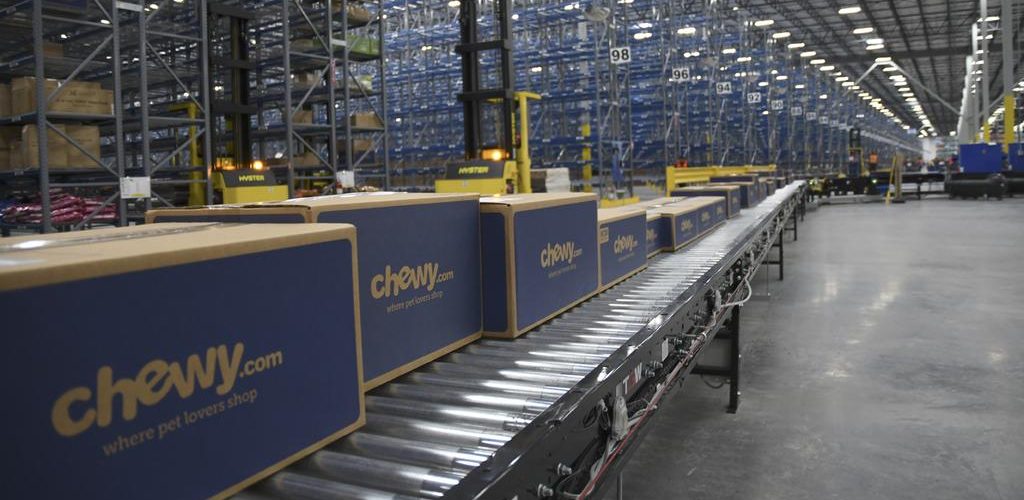KEY POINTS
- The market’s sell-off has created an opportunity for investors with a long time horizon.
- Amazon’s cloud computing business retains its growth prospects.
- Chewy remains in a good position to take advantage of online buying trends.
These two stocks have sold off, but their growth prospects remain attractive.
With the Russell 3000 index down by about 22% this year, no one can deny the market has hit a rough patch. Growth stocks have had a tough time in particular, with the Russell 3000 Growth index dropping by 28%.
But long-term investors can view this as a buying opportunity. While the following two stocks have fallen sharply, both have strong prospects that warrant serious consideration.
1. Amazon
Amazon (AMZN -0.64%) has experienced phenomenal growth since its founding in 1994 as an online bookseller. And the stock has handsomely rewarded shareholders since the company went public in 1997. But its shares have slipped this year, dropping by roughly 32%.
That’s partly due to sluggish profitability recently. In the second quarter, operating income dropped from $7.7 billion to $3.3 billion as the company contended with higher costs. For the third quarter, management expects operating income to come in at breakeven to $3.5 billion compared to $4.9 billion a year ago.
However, the good news is that sales keep growing. Amazon’s top line increased by 10% in the most recent quarter, after excluding the impact of foreign exchange translations, to $121.2 billion. On that basis, it anticipates about 17% to 21% growth for the third quarter. With management pledging to focus on productivity, higher profitability should follow.
A major key to the company’s future growth rests with its Amazon Web Services (AWS) segment. The cloud-computing business leads the field with a 33% market share followed by Microsoft‘s Azure and Alphabet‘s Google Cloud platform. Since it’s expensive to build and maintain data centers, it’s difficult for new entrants to compete.
Amazon’s fast-growing AWS business led the way, with sales increasing by over 33% in the second quarter to $19.7 billion. This compares to a 10% increase for the North American segment and a sales drop for international.
AWS also has a much higher margin than the other two segments. Last quarter, the operating margin expanded from 28.3% to 29%. With AWS’ prospects intact, Amazon’s growth story remains vibrant.
2. Chewy
Chewy (CHWY 2.00%) has also been a fast grower, particularly during the pandemic when pet adoption soared. In 2020, the stock price rose by 210%. However, 2022 hasn’t been kind to shareholders with the stock dropping by more than 46%.
But the company’s long-term growth prospects remain sound. In its second fiscal quarter (ended July 31), sales grew by 12.8% to $2.4 billion. While this slowed from a year ago, when the top line increased by 27%, that was still fueled by pandemic-related pet adoptions and online buying.
And Chewy expanded its gross margin from 27.5% to 28.1%. In other words, management didn’t discount heavily to gain sales. In fact, it was able to raise prices more than costs increased. And the number of active customers expanded by over 2% to 20.5 million. That shows the company’s growth wasn’t merely the result of the pandemic.
With people’s love of their pets, Chewy remains positioned to do well, even if the economy should tip into a recession. Management previously noted that while overall consumer spending fell in the 2008 to 2010 recession, pet spending rose by 12%.
Meanwhile, the pet industry continues to grow. Sales increased from $77 billion in 2015 to $117 billion last year, and it’s expected to increase at a 7.5% annualized rate through 2025, according to Packaged Facts. During that span, e-commerce sales grew even faster, representing 35% of 2021’s pet product sales, up from 8% in 2015. This puts Chewy, as an online leader in the pet industry, in a good position to capitalize.
Amazon and Chewy offer investors a unique buying opportunity. With their share prices down this year, they both sell at better valuations now. Amazon has a price-to-sales (P/S) ratio of 2.4 compared to well over 3.2 when 2022 began. During this time, Chewy’s P/S ratio dropped to 1.4 from about three.
When companies that still have strong growth prospects see their stock prices sell off, it’s a good time to do some research. If you take advantage, you could well be pleased looking back five years from now.
Source: Motley Fool










